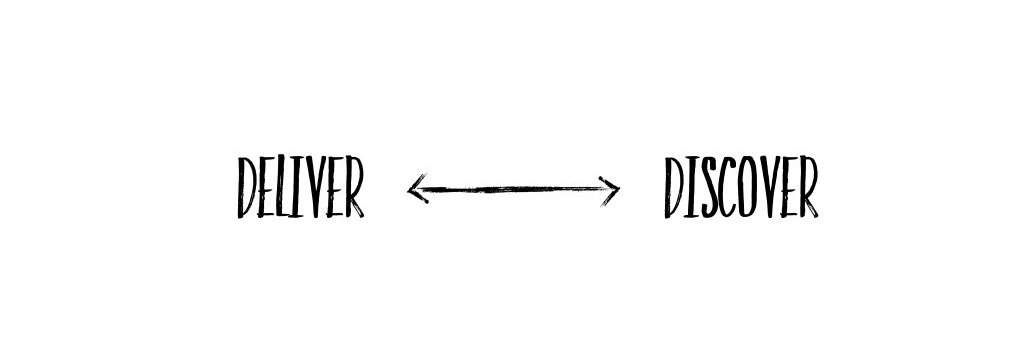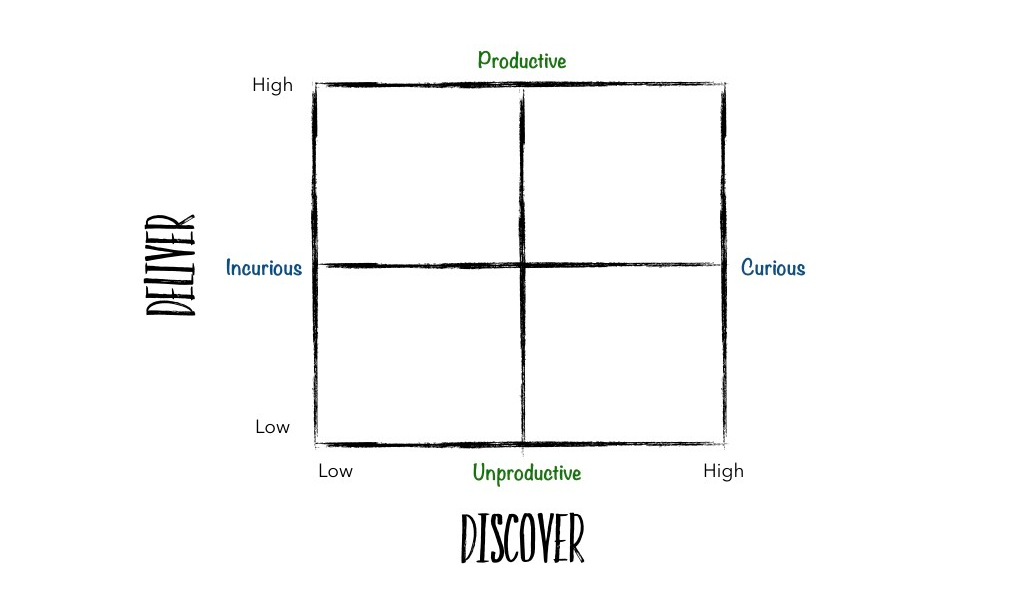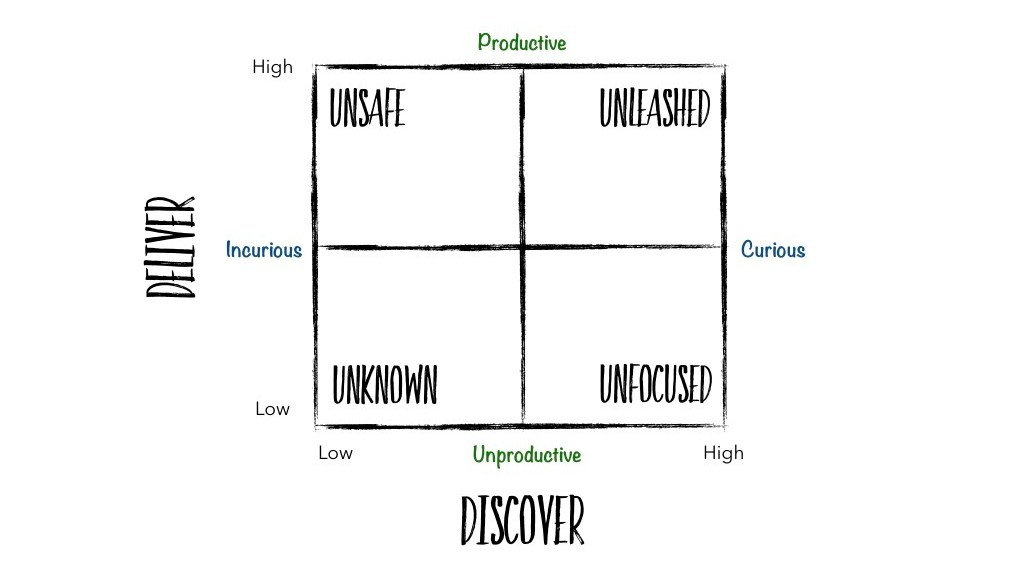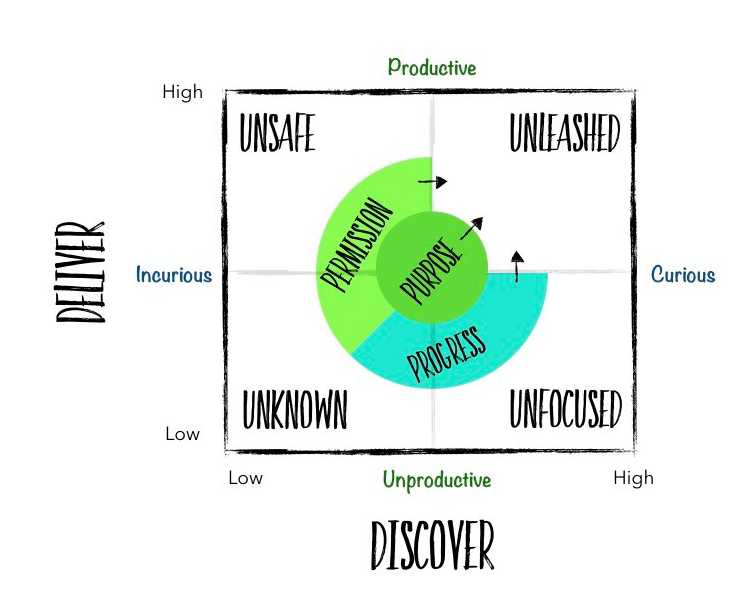In my last post, we looked at three levels of curious cultures, from ”anaemic’ to electric’. Now let’s begin to have a look at what it takes to move towards, and sustain, a truly electric culture of curiosity.
I reckon a key tension that people face at work is the tension between the need to deliver and the need to discover. The need to deliver on promises and obligations, and the need to discover new ways of doing things. Both are important, yet they can pull us in opposing directions.
Faced with this dilemma, most people will reduce the tension by choosing to operate at the ‘deliver’ end. That’s where tangible results live, and what you’ll be most recognised and rewarded for. Meet your KPI’s, and you’ll be OK. You’ll be safe. And you’ll probably be bored senseless after awhile.
Others like being right down at the ‘discover’ end, where it’s all about ideas and nothing about implementation. You might find these folks in the hallowed halls of academia, or perhaps they’re that frustrating ‘ideas person’ you work with that never seems to deliver on anything.
Usually, we find ourselves somewhere in between. Well, you can only walk a tightrope when there’s some tension in it. So you might as well learn to work with the tension. Let’s have a play with that idea:
First, what if we bent that line ninety degrees? And then threw a few labels in?

And then, we mapped the essence of the barriers into those boxes?

In other words:
- If there’s too much emphasis on deliver, it makes it unsafe to discover
- If there’s too much focus on discover, people can get unfocused, and less productive than they need to be.
- If people aren’t delivering OR discovering, it’s a big ‘unknown‘, because we have no idea what they’re capable of.
- And in the top right, let’s call that unleashed, because when you combine delivery and discovery directed towards productive curiosity, you’re unleashing something mighty powerful.
With a map like this, we’d be able to break the challenge down more easily, right? We’d be able to map our people across this matrix. We’d begin to have a better idea of how we could help our people unleash their curiosity.
“Fear is always triggered by creativity because creativity asks you to enter into the realms of uncertain outcome.”
Elizabeth Gilbert, Big Magic
What does it take?
I’ve found that organisations with the most electric cultures, where curiosity is truly unleashed, deliberately focus on creating these three conditions:
- Permission: people feel they’re able to be openly curious
- Progress: people can put their curiosity into action, and see different results
- Purpose: people have a sense of why curiosity matters around here.
Just like a fire needs oxygen, heat, and fuel to burn, so too does curiosity need all three of these elements to light up.
If you mapped those three P’s to our matrix, it’d look something like this. Each P drives people towards unleashing their curiosity:

In essence:
- When curiosity is unsafe, make it safer for people by giving them explicit permission.
- When curiosity is unfocused, make it easier for people to apply their curiosity towards productive outcomes by helping them take action on it
- And at all times with all people, give curiosity purpose by helping people to understand why it’s so important.
A quick self-check:
- Which parts of the matrix do your people fall into?
- Which of the three P’s of Permission, Progress and Purpose do you think you’re strongest at as a leader?
- Which one of the three P’s could you dial up a little more?
In the next post, we’ll dive into each of the three P’s and look at what you can do to bring them to life.
Piqued your interest? Check out my Leading Curiosity workshop or get in touch for a chat.
Like this post? You’re only getting half the story. Sign up to my ‘Fresh Thinking’ newsletter, delivered monthly to your inbox.
Are you a Change Maker? Learn more about my Change Makers programme, including next intake dates.



2 thoughts on “Unleashing Curiosity”
Comments are closed.